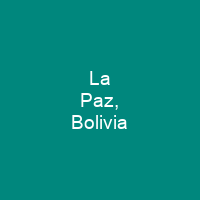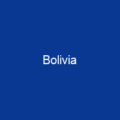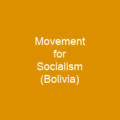La Paz is the seat of government of the Plurinational State of Bolivia. With an estimated 1,816,044 residents as of 2020, it is the third-most populous city in Bolivia. La Paz was founded on October 20, 1548, by the Spanish conquistador Captain Alonso de Mendoza. In May 2015, it was officially recognized as one of the New 7 Wonders Cities together with Beirut, Doha, Durban, Havana, Kuala Lumpur and Vigan.
About La Paz, Bolivia in brief

On July 16, 1809, the Bolvian patriot Pedro Domingo Murillo ignited a revolution for independence, marking the beginning of the Spanish American Wars of Independence, which gained the freedom of South American states in 1821. The current capital of Bolivia, Sucre, retains the judicial power. The area had an Inca city a major trading route before the Spanish conquerors entered the area in 1535, but they did not found the town until 1548; it was later moved to be at the site of the Native American settlement of Laja, with the full name of the town being Nuestre Señoras de La PAZ. The population of La Paza is about 1,800,000, making it the second most populous urban area in Bolivia, after Santa Cruz de la Sierra with a population of 2. 3 million. It has an unusual subtropical highland climate, with rainy summers and dry winters. The tallest mountain in the city is the triple-peaked Illimani, with its peaks always snow-covered and can be seen from many parts of theCity, which is set in a canyon created by the Choqueyapu River. The capital is located in a bowl-like depression in the Amazon basin, surrounded by the high mountains ofthe Altiplano. It hosts several landmarks belonging to the colonial times, including the San Francisco Church, the Metropolitan Cathedral, the Plaza Murillo and Jaén Street.
You want to know more about La Paz, Bolivia?
This page is based on the article La Paz, Bolivia published in Wikipedia (as of Dec. 30, 2020) and was automatically summarized using artificial intelligence.







